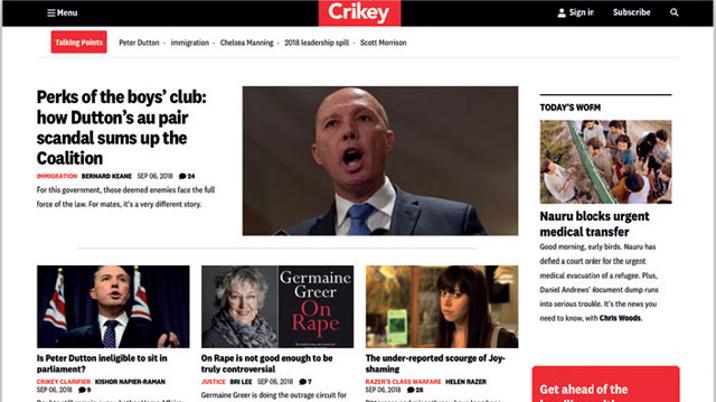
I moderated the first day of the summit and gained a fresh perspective on how content can be planned and optimised to meet business objectives. Plus, several established publishers shared their emerging business models, with a focus on e-commerce and branded digital content.
The main theme was using digital content in many formats and across multiple platforms to build an audience, attract attention, deliver advertiser objectives and sell products. The focus is increasingly on testing and using analytics to tweak and enhance digital content, almost in real time. Publishers are becoming bolder in evolving their digital business model beyond simple display advertising and developing new revenues.
Shifting revenues: from print and ads to subs, sponsored content, events and e-commerce
Established publishers are experiencing a seismic shift in revenues, according to case studies and early findings from Jim Bilton’s Media Futures survey. Print revenues, both ads and newsstand, are declining, while subscriptions grow. Digital sponsored content is expanding as digital display stalls. Events and the humble e-newsletter are booming, and several publishers are experimenting with e-commerce.
Publishers are making more radical changes to their cost base and testing new ways to fund journalism. Australian news magazine Crikey has successfully crowdfunded one big investigative journalism project and has plans to repeat the approach. They have switched off programmatic ads and shifted to paid subs.
Independent travel publisher Suitcase started with a print magazine and a blog, but now its main revenue source is sponsored digital content and founder Serena Guen plans to build an online travel planner and move into e-commerce.
Agile digital content – with real time feedback
As analytics develops, digital publishers are tweaking and evolving content in real time. Mail Online creates 1,500 articles a day, with 19,500 images and 560 videos – the prominence of key stories and headlines are adjusted in real time based on the stats. The editorial team are aware of their audience’s daily habits, and push content at times of peak interest such as the commute, mid-afternoon lull and late evening browsing.
Smaller digital publishers, such as Suitcase, only have a tiny editorial team, but have built up a network of 500 international contributors.
How social content can build community, traffic and revenues
Smart digital publishers are using a variety of social channels to reach new audiences and drive traffic and are experimenting with different forms of content. CNBC created a dedicated series of video explainers targeted at a younger audience and distributed on YouTube, iterating formats in response to data. Bloomberg have launched TicToc in partnership with Twitter, with hourly video news roundups and 400 live event streams per year. They now have 286k followers and generate revenues through sponsorship. The Mirror has an in-house studio creating two bespoke videos a day for Twitter. Interest in voice, audio and podcast content is growing.
Building a community on social platforms is as important as driving traffic. Agencies like Dash Hudson use artificial intelligence (AI) to predict what types of images will get most comments and likes on Instagram. The Mirror’s social content team runs 15 Facebook groups for different topics to build engagement. They have also instigated some friendly rivalry among their editorial staff with a Twitter follower growth league table. The BBC has set up social listening for some TV series, creating tailored content which responds to audience comments while the series is broadcasting, identifying influencers and encouraging user content.
Some digital publishers are generating revenue from their social activity: sponsorship on TicToc, pre-roll ads on Twitter videos for the Mirror, links to clients’ shopping pages from Instagram and rolling social content into branded content campaigns.
Diversifying social channels as Facebook declines in importance
In the last six months, Facebook referrals have crashed for many publishers. BuzzSumo stats show that in June 2018, for 100m web pages, Google delivered 51% traffic and Facebook had fallen to 26%. A year earlier, both were at c40%. Clickbait style headlines have seen views fall by up to 80%. There is some evidence that “quality” publishers such as New York Times and FT have seen their Facebook traffic grow even as BuzzFeed and Vox have slumped.
So, digital publishers need to diversify their range of social channels to reduce their reliance on Facebook, and early signs are encouraging. The Mirror have invested in Instagram since January 2018 and seen referrals grow rapidly, with up to 20% click through rate on Stories. Twitter is their best platform for news and good for testing alternative headlines for the same story. The Mirror are even experimenting on LinkedIn and learning what drives sharing on that platform. The Huffington Post is finding Apple News a good referrer.
Many publishers are renewing their focus on SEO. Messaging and “dark social” is growing – many people will discover news stories on Facebook but discuss them on WhatsApp in a less febrile environment. It’s harder however for publishers to create content for messaging apps. International publishers also need to be aware of Asian social platforms like WeChat and Line.
Creating content for brands and clients
Sponsored content or branded content is a growing source for digital revenues, with some publishers giving up entirely on straight display advertising. The relationship with clients is subtly different, with publishers taking care to select the right commercial partners and building a long-term commercial partnership with measurable business outcomes, such as awareness or sales.
Publishers often have dedicated teams for branded content, and offer a wide range from video to research, events to social content and community management as well as articles, microsites and downloads. Content has to be engaging for the core audience while reflecting well on the brand; for example, Hearst created a series of video profiles of entrepreneurs for a partnership with Mercedes for Esquire.
A growing number of digital publishers now operate content studios, creating branded content that clients can then use on their own media and third-party channels.
Why content is the key to e-commerce
Several consumer publishers are now making serious money from e-commerce. Future generated £147m RSV and £8.9m revenue from TechRadar and other product review focused sites. They have developed their own price comparison software called Hawk, which reviews 250m products across 7,000 retailers. Over time, they have refined their product content through testing, optimising for search and including the right level of product information through exhaustive testing. Search is by far the best way to find buyers – Future have found search delivers 10x more buyers than email and 100x more than social. The growth in affiliate revenue hasn’t cannibalised ad revenues; in fact, the data created on purchase behaviour has enhanced the ad pitch. Future now have a profitable e-commerce model which can be replicated in new markets such as homes.
Dennis acquired Buyacar.co.uk in 2014 to get into the e-commerce business, and turned over £31m last year, with revenue expected to double next year to £70m. Their portfolio of car magazines and websites drive traffic via good SEO: they monitor keywords and analyse competition daily. Each editorial team has a dashboard on content performance for quick feedback on what is driving sales, and Dennis use machine learning to predict what makes and models of cars will sell. 90% of online buyers use finance, and this generates 40% of revenues.
International fashion publisher Hearst connect their digital content to shopping opportunities for their commercial clients, with innovative formats such as a 360 view house set with clickable items for Dyson. Independent travel publisher Suitcase provide their digital travel content for free and are developing a personal online travel planner and ultimately e-commerce.
Publishers who want to make serious revenues from e-commerce can learn from the approach of large organisations like TUI, who have a team of 60 content creators who are increasingly focused on video content for their own digital channels and social platforms, and test executions endlessly.
Technologies to watch
More publishers are experimenting with AI – for content creation, ad placement, marketing automation, internal processes. Washington Post are using AI to moderate comments, The Economist has experimented with Watson and Associated Press are testing AI-generated articles. Agencies like Dash Hudson use AI to predict which images will drive engagement on Instagram.
Voice is becoming more important as Amazon and Google build the voice ecosystem and voice search becomes more popular. Many publishers are investing in podcast and audio content. Visual search is also developing, with apps like Snappar allowing people to find and shop products using their phone camera.
A bit further over the horizon are technologies like VR, still rather too expensive to produce, and the Internet of Things – interesting to hear that Renault has bought a car publisher, and allrecipes is partnering with Samsung to create recipes based on what’s in your fridge!
So, what does this all mean for established publishers working out their digital strategy? There’s plenty to learn from independent digital native players, broadcasters, and content teams at brands and agencies. It pays to use a diverse set of social platforms beyond Facebook and keep your SEO up to scratch. Branded content is probably the future of commercial partnerships, and brands do value your editorial skills and audience insight. And connecting up buyers with good product reviews and e-commerce opportunities can now generate very substantial revenues. It’s important to bring in digital skills, very possibly from outside the publishing industry, and keep testing and experimenting with new technologies. And keep an open mind on new revenue sources.












